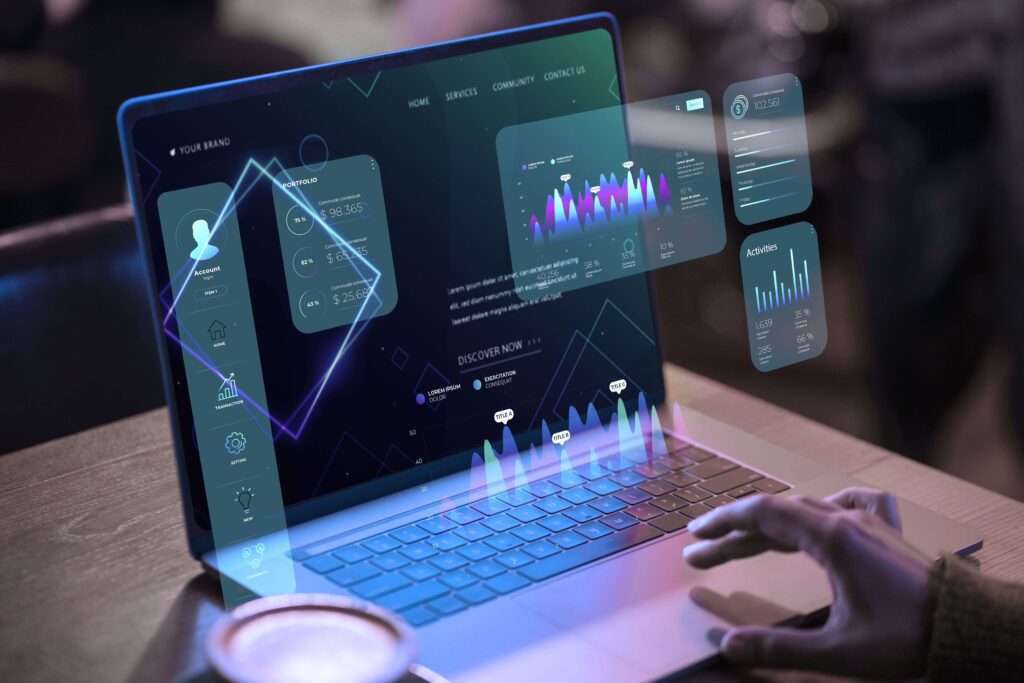Data, a well-known phenomenon, is used by everyone, and the term “big data” is casually thrown around with anticipation and expectation. However, transforming data into a competitive advantage for businesses is not an easy task.
The critical point of “quantity turns into quality” has arrived
The Goldilocks Principle/Condition, derived from the Grimm fairy tale “Goldilocks and the Three Bears,” illustrates the story of Goldilocks, who, when faced with three bowls of porridge, three chairs, and three beds, chooses the one that is just right in size and temperature. This principle describes the state where conditions are ripe for optimal development. In the evolution of computer science, the Goldilocks Principle is applicable, especially with the exponential growth in the number of transistors on integrated circuits, following Moore’s Law. This growth has led to a significant transformation in computer processing, driving the rapid rise of big data and the trend of artificial intelligence over the past decade.
Technology driving the recent “Paradigm Shift” in human behavior
In this state of the Goldilocks condition, not only does it influence endless new technological applications, but behavioral data is also generated, collected, and processed rapidly. The fast-paced clock speed triggered an unprecedented “Paradigm Shift” in human history, fundamentally altering human lifestyles and work patterns. What used to take weeks for data analysis can now be accomplished in seconds. Managers can make decisions in real-time without waiting for IT reports. In the business world, where a day can feel like weeks, the ability to gain a competitive edge is crucial.

Image Source: Freepik
Behind the data is people, with imperfections, humanity, and different perspectives
As technology triggers a “Paradigm Shift,” humans are confronted with the massive amount of data continually generated. It is essential to recognize the nature of data—it is a creation of humans reflecting the world and human behavior. Throughout the data lifecycle, from acquisition, collection, cleaning, validation, modeling, storage, management, governance, preservation, analysis, sharing, permissions, privacy, asset ownership, etc., every stage is intricately connected to human factors. Human elements can introduce defects into data, leading to errors in data analysis and decision-making. Therefore, understanding the challenges of working with live data and the human issues behind the data is crucial; otherwise, data initiatives can easily fail.
Humans are creatures of habit
Humans are creatures that take things for granted, accustomed to existing patterns and ways of doing things. Successful business and behavioral models today often stem from past contexts. However, when the underlying assumptions change, and the once-best practices become burdensome, people often fail to adjust. In the face of continuously accumulating live data, traditional data workers may not fully understand the depth of the water. The different processing stages, from thousands to billions of live data, represent distinct challenges. The heavier the burden of conventional practices, the more resistant people are to adapting to new ways of handling live data.Technology makes data more dynamic; businesses need to adjust, and operational modes must change.

Data and analysis are two different things
The world is alive, and data reflects the world, making data dynamic. There is a common phenomenon in companies where everyone waits for data to be processed, then analyzes it, and everyone considers themselves a data expert. However, processing live data and analyzing it are two different tasks requiring different expertise. While analysis is rewarding as it provides visible results, data processing is a challenging and often underappreciated task. Recognition typically goes to analysts for successful decision-making, but the effort of engineers in data cleaning is often overlooked.
The gap between Business and Technology – Gap between Supply and Demand
Building infrastructure for live data and analysis often leads to confusion about where to start and what data to collect and process. When business executives seek opportunities and new business models from data, they might find themselves not asking the right questions, and data professionals may respond with incorrect or partial data analysis. This communication gap results in frustration, with data analysts frequently hearing, “I already knew that.”
The difficulty in accumulating Big Data experience as an asset
For managers, the most significant pain point is investing substantial resources in processing and analyzing data, with the experience and information systems generated not being accumulated as company assets. The biggest beneficiaries are the engineers and analysts involved, accumulating experience in their resumes and enhancing their competitiveness. However, the data transformation into a competitive advantage for the company often falls short.
Data is not about “big”; it’s about being “live”
In the era of live data, companies must go beyond the confusion of “big data,” break free from data islands, establish the foundation for live data infrastructure, effectively grasp and utilize live data, and transform live data into active assets.
Therefore, business managers understand the importance of data and have expectations for it. However, if it remains in the form of projects or short-term goals, underestimating the depth of data can lead to results that are either singular or below expectations, failing to bring about structural changes or transformation for the company—a case of “easier said than done.”
“Live” data is revolutionizing our way of life, work, and thinking
In a rapidly changing world, live data is the subsequent effect of the future information revolution, reshaping our way of life, work, and thinking. The era of managing companies, devising strategies, and setting goals solely based on a few analytical reports has come to an end. Companies that understand how to handle the urgency, priorities, and distances of data in the age of live data are at a critical juncture.
In the era of live data, if companies can clearly delineate the tasks of data processing and analysis, with the ultimate goal of creating a “data organization” as the foundation of live data infrastructure, every level and worker in the enterprise, regardless of technical background, can work and make decisions using live data as effortlessly as using a personal computer.
Opportunities are not daily occurrences, and business insights are elusive. Practicality and humility are the correct attitudes in dealing with data. Everyone in the organization should seek insights pragmatically and critically assess information. Only with new thinking and new models can one seize foreseeable opportunities.
